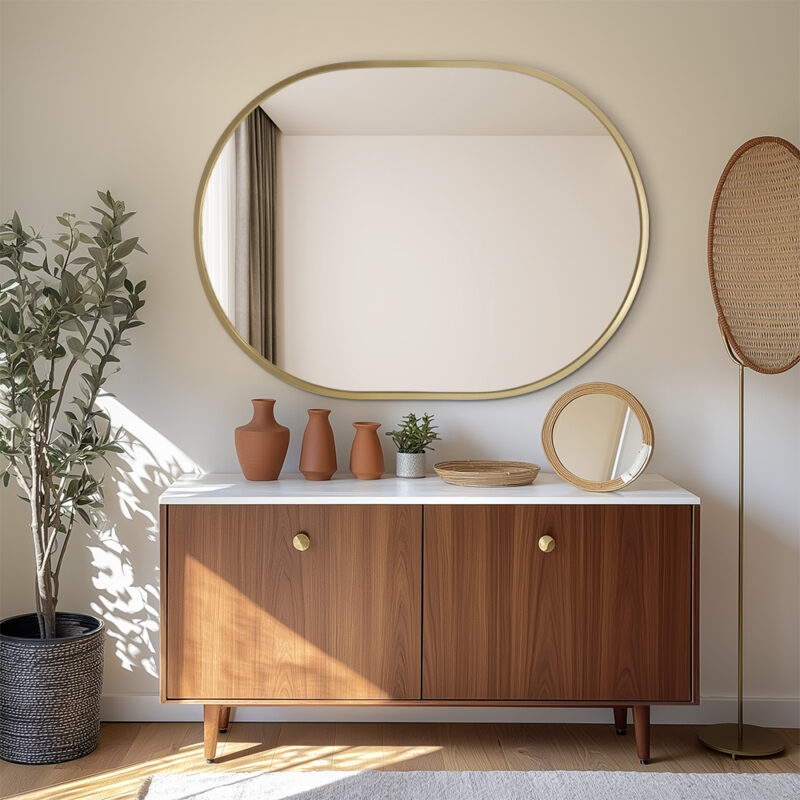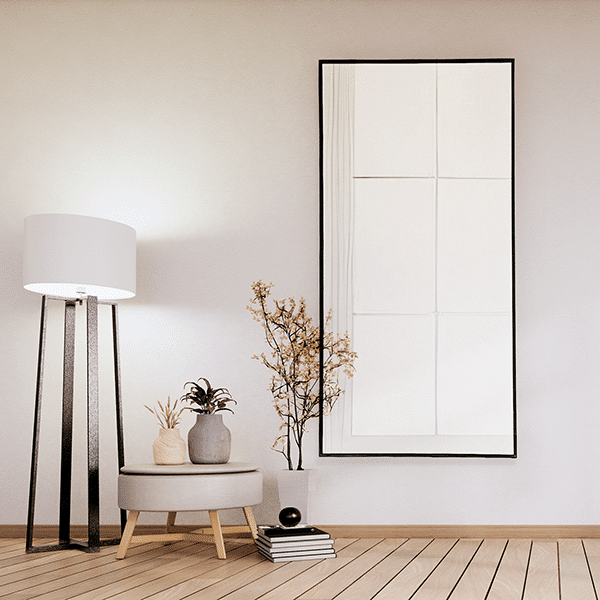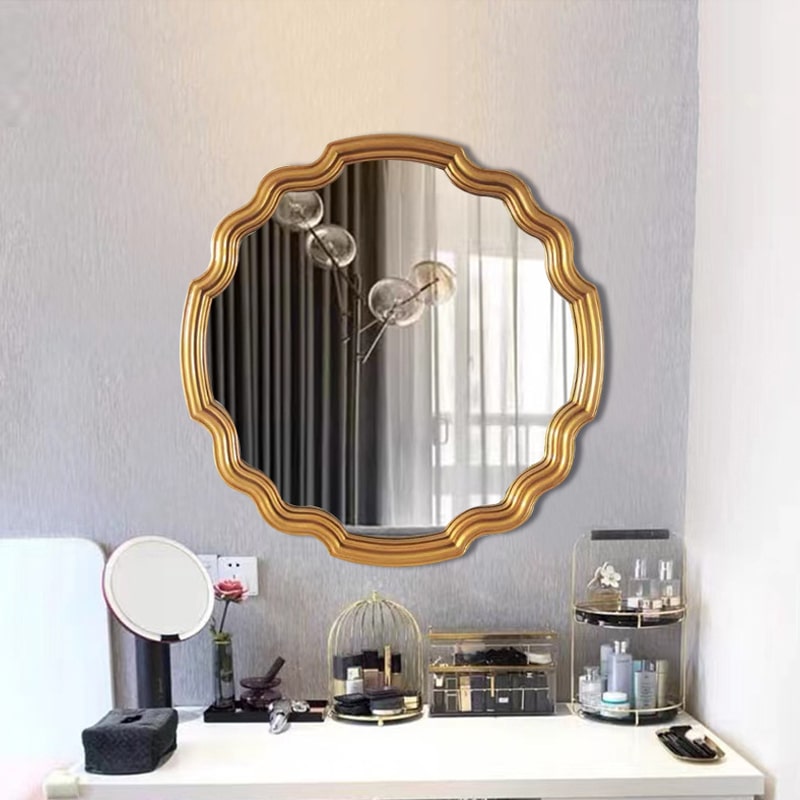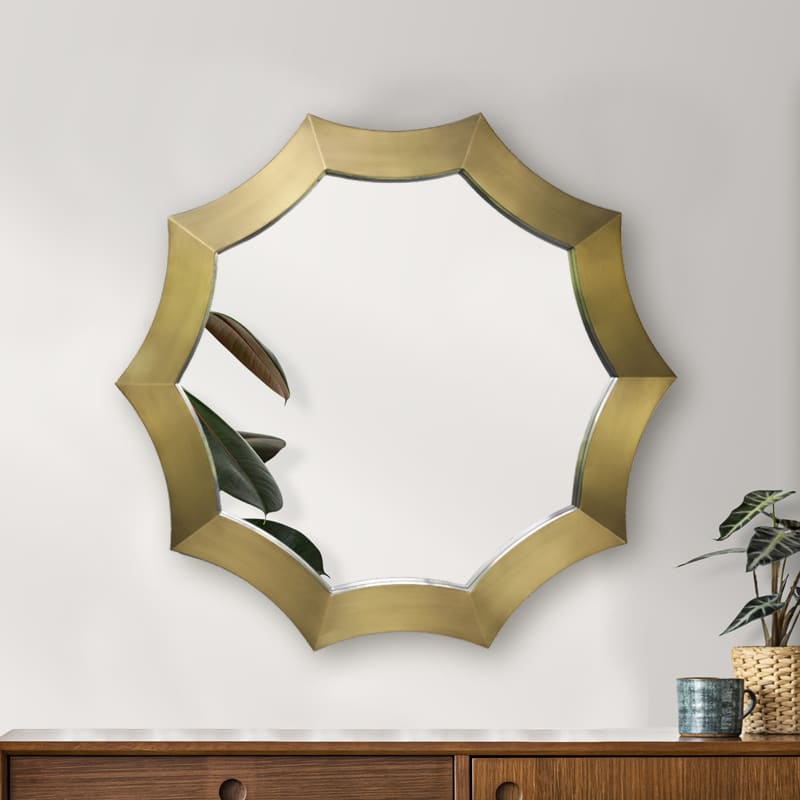
Mirrors have always held a prominent place in interior design—not just for their practical use, but for their unmatched ability to elevate spaces. While a single mirror can brighten a room and create the illusion of more space, layering mirrors takes this concept to a new level. This creative home décor idea adds depth, drama, and an artful edge to your styling, whether you live in a compact apartment or a spacious modern home.
From overlapping mirrors to mixing shapes and textures, mirror layering is a sophisticated yet versatile design strategy that suits any interior design style. Whether you’re enhancing natural light, making a bold style statement, or simply updating your home décor, learning the art of mirror layering can truly transform your space.
Why Layer Mirrors in Interior Design?
Layering mirrors isn’t just a visual trick—it’s a deliberate design move. Unlike a single wall mirror, multiple mirrors add dimension and a sense of curated sophistication to any room. This technique works beautifully in both small and large spaces, from coastal retreats to inner-city apartments across Australia.
Key Benefits:
1. Creates Visual Depth
Layered mirrors offer the illusion of space and depth—perfect for smaller homes or rooms with limited natural light. This technique expands the perceived size of a room while adding layers of visual interest.
2. Maximises Light
In Australian homes, where sunlight is abundant, strategically placed mirrors reflect light deeper into interiors. This reduces reliance on artificial lighting and enhances warmth throughout the day.
3. Delivers Instant Style
Whether your aesthetic is minimalist, industrial, or eclectic, layered mirrors add a designer touch. From vintage frames to sleek modern lines, the right mirror combination can tie an entire room together.

4. Establishes a Focal Point
Instead of traditional wall art, try grouping mirrors to create a stunning centrepiece. The play of reflection and shape adds energy and movement to otherwise plain walls.
5. Enhances Textures and Surroundings
Mirrors reflect more than light—they reflect the beauty of your space. From timber accents to textured feature walls, layered mirrors magnify detail and texture effortlessly.

4. Combining Mirrors with Art
Want a more eclectic look? Mix framed artwork with mirrors for a modern gallery wall. This creates contrast and adds personality.
Creative Ideas:
- Interlace small mirrors between artworks.
- Layer a mirror partially over a canvas for dimension.
- Choose artwork with metallic or glass elements for harmony.
How to Master the Art of Mirror Layering
Designing with mirrors takes more than just hanging a few pieces on the wall. It requires balance, thoughtful composition, and attention to detail. Here are four proven techniques to get you started:
1. Overlapping Mirrors
Layering mirrors over one another is a bold and artistic choice. This method works well on fireplaces, console tables, and gallery walls.
Styling Tips:
- Start with the largest mirror as a base.
- Use mirrors of varying sizes and styles to avoid monotony.
- Allow some frames to overlap for a casual, curated look.
- Choose finishes that complement your existing décor, such as brushed brass or black matte for modern Australian interiors.
2. Mixing Shapes and Sizes
Create a dynamic arrangement by mixing round, rectangular, and abstract-shaped mirrors. Asymmetry can often be more visually engaging than strict symmetry.
Best Practices:
- Anchor your design with a statement mirror.
- Surround it with smaller, complementary shapes.
- Maintain balance by keeping spacing consistent.
3. Incorporating Mirrored Furniture
Furniture with mirrored surfaces—like sideboards, nightstands, or coffee tables—adds another layer of reflectivity, ideal for contemporary and glam interiors.
Design Tip:
Pair a mirrored console table with a layered mirror wall above it for an elevated hallway or entryway setup.
Room-by-Room Inspiration
Mirror layering isn’t one-size-fits-all—it can be tailored to every room in your home.
Living Room
- Create a feature wall with layered mirrors and framed prints.
- Reflect garden or coastal views with large mirrors opposite windows.
- Combine floor mirrors with layered wall décor for a boutique feel.
Bedroom
- Layer mirrors behind a headboard or dresser to add elegance.
- Try mirrored bedside tables for subtle reflectivity.
- Use wall-mounted mirrors above vanity spaces for functionality and style.
Entryway & Hallway
- Layer different sizes of mirrors to elongate narrow spaces.
- Combine with a console table and greenery for a welcoming entry.

Bathroom
- Double up mirrors above dual vanities.
- Add a decorative mirror over a standard mirror for a luxe upgrade.
- Use mirrored tiles or mosaic mirror accents to reflect texture.

Common Mistakes to Avoid
Even the most stylish mirror setups can fall flat if not executed well. Here are some common pitfalls to steer clear of:
Overdoing It
Too many mirrors can make a space feel chaotic. Focus on creating balance and cohesion.
Ignoring Reflections
Always consider what will be reflected. Avoid placing mirrors where they’ll reflect clutter, wires, or harsh lights.
Mismatched Styles
While variety adds interest, clashing frames or unrelated styles can disrupt flow. Stick to a consistent palette or finish.
Skipping Secure Installation
Layered mirrors—especially larger or heavier ones—must be properly mounted to avoid accidents or damage.
Final Thoughts
Layering mirrors is one of the most creative and impactful ways to style your home. Whether you’re aiming for a bold designer look or simply want to bring more light into your space, this trend is both functional and beautiful. With the right mix of balance, texture, and creativity, you can use mirrors to elevate every room in your home—Australian-style.